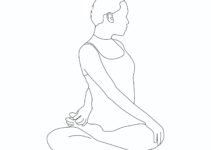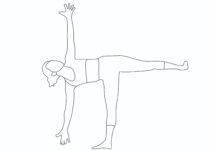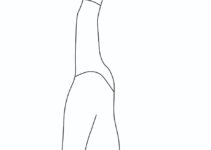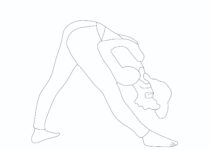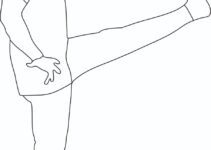What is the meaning of Paschimottanasana?
Paschimottanasana is a sitting forward bending yoga pose wherein intense stretch is experienced on the west. Though, to some extent, it comes under advanced yoga, it becomes easy to practice after mastering the practice. It simultaneously heralds numerous health benefits such as burning belly fat, strengthening the spine, weight loss, etc. Paschimottanasana also comes with some contraindications. Therefore, initially, it should be practised without taking any extra pressure. Since Paschimottanasana is a Sanskrit name, it is pronounced as (POSH-ee-moh-tan-AHS-anna) wherein paschimottana= intense stretch of the west (pashmina west.
uttana= intense stretch).

How to do Paschimottanasana step by step
- Sit on the ground, stretching both legs in front. Place hands by the sides with palms resting on the floor. Fingers should remain together, pointing forward.
- Loosen your back muscles and bend the body forward as far as possible.
- Maintaining this pose for as long as comfortable.
- To come back, loosen your hands and place them where they are comfortable. It would be easier if they were put on the thighs.
- Practise this asana daily and keep trying forward, bending a little more till you can hold the big toes of the legs with the forefingers of your respective hands. The navel should be touching the thighs.
- Bring chest and head close to the legs as much as possible, and place the elbows by the sides of the legs on the ground.
- Maintain the posture as per the capacity. Come back by raising your chest and head from the legs.
What are the health benefits of Paschimottanasan?
- The yoga pose is good for the overall health benefits of the spine. If you are comfortable practising the seated forward bend yoga, it stretches the entire spinal region and the associated nerves adequately.
- It is beneficial for those who desire to have a flat stomach. The practising of the asana provided suitable stretch to the belly and dashed with the legs. Those who perform it regularly experience burning of belly fat too.
- It helps in the secretion of gastric juices. The abdominal region gets a suitable massage by practising the pose, which is helpful in the secretion of fluids, ensures digestion, and prevents constipation.
- It helps prevent and manage diabetes as the yoga pose gives a massage to the pancreas, thus ensuring insulin secretion.
- The pelvic region experiences adequate massage due to the posing practice. Thus, it is good to prevent gynaecological disorders such as menopause and menstrual discomfort.
- Very few yoga poses are beneficial for kidneys. Paschimottanasana is one of the poses which shows its impact on kidney and liver function.
- It is also known as a stress-relieving yoga pose because it coordinates nervous and pranic energies within the body.
- Its practice enhances blood flow to the head region thus good for those with headaches and migraines.
- It is one of the best yoga poses to strengthen and solidify your hamstrings.
- It helps to enhance your appetite by increasing the efficiency of metabolism.
Contraindications of Paschimottanasana
Though the seated forward bend yoga has numerous health benefits, it has some contraindications, too.
- Asthma
- Back injury
- Abdominal ulcer
- Pregnancy
- Sciatica
- Slipped Disc
Modifications and variations of Paschimottanasana
The practice of paschimottanasana is not so easy. It needs regular exercise to harness its benefits. If somebody has muscular flexibility, performing the pose has become easier for him. However, many people need help to reach the final stage of this pose. Before practising the forward seated pose, one should perform EkaPada Janu Sirsasana. This pose will help you to practice paschimottanasana easily. The Sun Salutation is also quite effective in reducing body stiffness.

